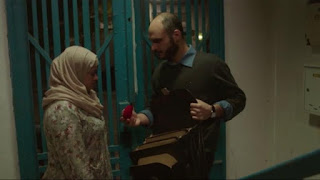Eric Red, 1988, USA
 There was a time in my youth when my friends and I would drawl “Piss on you!” in terrible Southern American twangs, mimicking Harley Cross in ‘Cohen & Tate’. I’ve waited a long time for this to feature in the DVD/Blu-Ray revolution and now here it is. There was a time in the eighties when its director Eric Red seemed a reliable name, being the writer of ‘The Hitcher’ and ‘Near Dark’, but he never quite lived up to that promise after those cult titles that helped define the era’s horror. Even so, I always had a soft spot for ‘Cohen & Tate’, the tale of two mismatched hit-men sent to kidnap a nine year-old boy (Cross) who some mobsters somewhere think saw something he shouldn’t have.
There was a time in my youth when my friends and I would drawl “Piss on you!” in terrible Southern American twangs, mimicking Harley Cross in ‘Cohen & Tate’. I’ve waited a long time for this to feature in the DVD/Blu-Ray revolution and now here it is. There was a time in the eighties when its director Eric Red seemed a reliable name, being the writer of ‘The Hitcher’ and ‘Near Dark’, but he never quite lived up to that promise after those cult titles that helped define the era’s horror. Even so, I always had a soft spot for ‘Cohen & Tate’, the tale of two mismatched hit-men sent to kidnap a nine year-old boy (Cross) who some mobsters somewhere think saw something he shouldn’t have.  What follows is a nocturnal road movie – which typifies these early Red favourites – in which it is quickly apparent that the two hit-men are thorough opposites and get on one another nerves. The kid senses this quickly and plays them off of one another. You will have to allow that a preteen can manipulate a couple of hardened killers, but it shouldn’t be underestimated just how tricksy and smart kids can be; and viewing it through the filter of a fairy tale about a child using wits to overcome odds bolsters suspension of disbelief.
What follows is a nocturnal road movie – which typifies these early Red favourites – in which it is quickly apparent that the two hit-men are thorough opposites and get on one another nerves. The kid senses this quickly and plays them off of one another. You will have to allow that a preteen can manipulate a couple of hardened killers, but it shouldn’t be underestimated just how tricksy and smart kids can be; and viewing it through the filter of a fairy tale about a child using wits to overcome odds bolsters suspension of disbelief.  Red’s often quotable script gives
everyone nuance and weakness: a hearing-aid; a temper that, when thwarted, dissolves
into childish self-pity; childish precociousness giving way to tears. Hit-men
coming undone when their victim proves quite a match is a staple thriller
storyline but nevertheless this doesn’t try to be groundbreaking, it’s just a
good thriller. Perhaps Baldwin is over-ripe and cartoonish, but Cross is more
than a match for his adult co-stars, amusingly annoying one minute and a scared
little kid the next. Roy Scheider is the backbone, delivering all the stolid
adultness to hold it all together; it’s a fine portrayal of a man caught up in
something he’s tired of. The stripped-down narrative and locations give this a
direct intent and nightmarish edge, with the deleted scenes on the disc showing
that this was intended to be even more brutal. These sudden moments of
brutality, a crisp script and some memorably framed shots makes this a stand-out.
A highly entertaining black humoured thriller with a centre of how adult
weaknesses can capsize simple plans.
Red’s often quotable script gives
everyone nuance and weakness: a hearing-aid; a temper that, when thwarted, dissolves
into childish self-pity; childish precociousness giving way to tears. Hit-men
coming undone when their victim proves quite a match is a staple thriller
storyline but nevertheless this doesn’t try to be groundbreaking, it’s just a
good thriller. Perhaps Baldwin is over-ripe and cartoonish, but Cross is more
than a match for his adult co-stars, amusingly annoying one minute and a scared
little kid the next. Roy Scheider is the backbone, delivering all the stolid
adultness to hold it all together; it’s a fine portrayal of a man caught up in
something he’s tired of. The stripped-down narrative and locations give this a
direct intent and nightmarish edge, with the deleted scenes on the disc showing
that this was intended to be even more brutal. These sudden moments of
brutality, a crisp script and some memorably framed shots makes this a stand-out.
A highly entertaining black humoured thriller with a centre of how adult
weaknesses can capsize simple plans.









